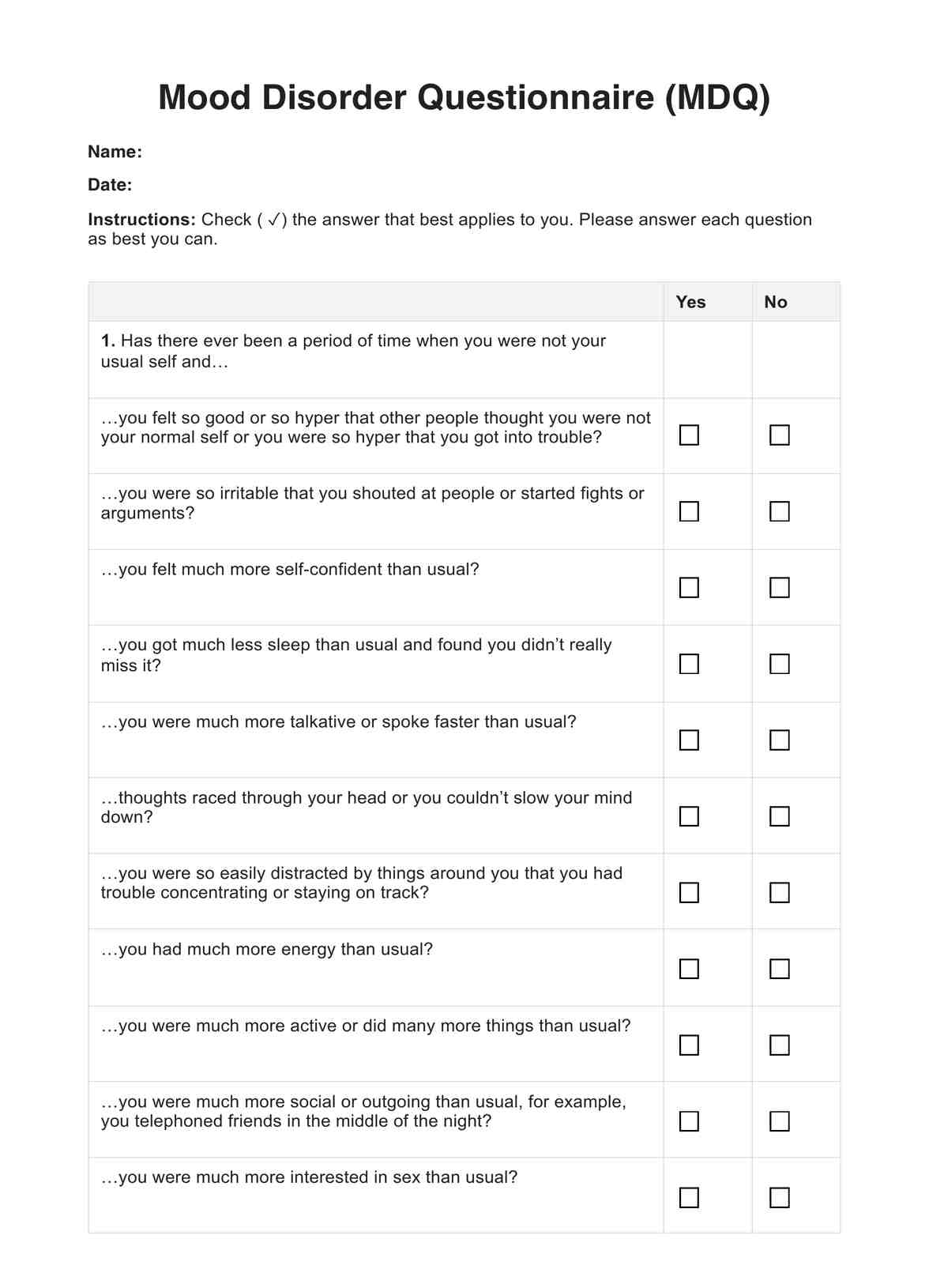Patients can accomplish the questionnaire within five minutes.

Mood Disorder Questionnaire
Issue the Mood Disorder Questionnaire for mood disorders to gauge your patients' symptoms during the screening process.
Use Template
Mood Disorder Questionnaire Template
Commonly asked questions
Yes. The Mood Disorder Questionnaire can be used as a self-report assessment. If you get a positive screening based on the criteria, please see a professional for further evaluation. Under no circumstance should you diagnose yourself if you get a positive screening result.
No. It is a screening tool that’s used early in the diagnostic process. A diagnosis should only be made after conducting a further examination/evaluation of a patient.
EHR and practice management software
Get started for free
*No credit card required
Free
$0/usd
Unlimited clients
Telehealth
1GB of storage
Client portal text
Automated billing and online payments











